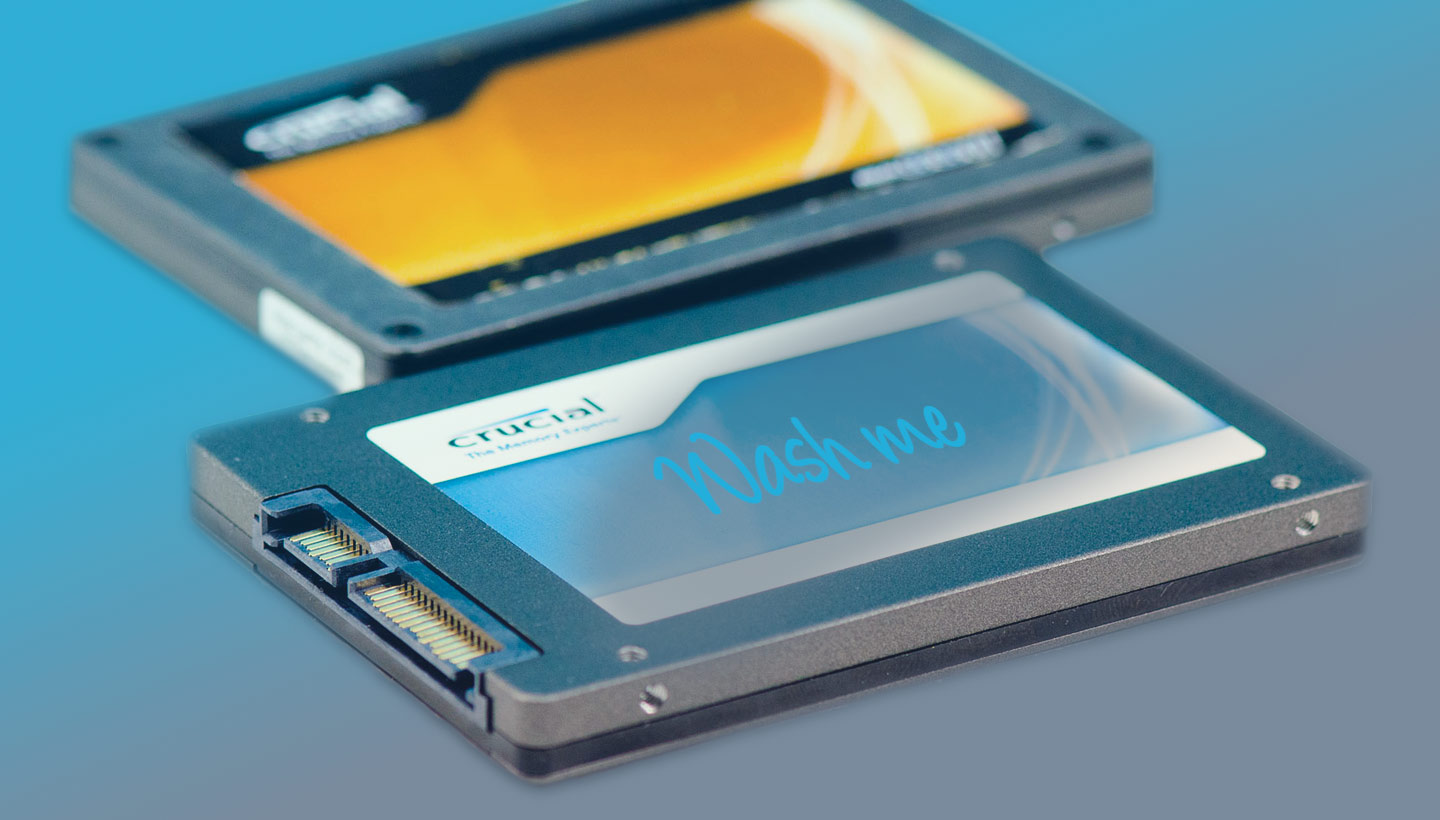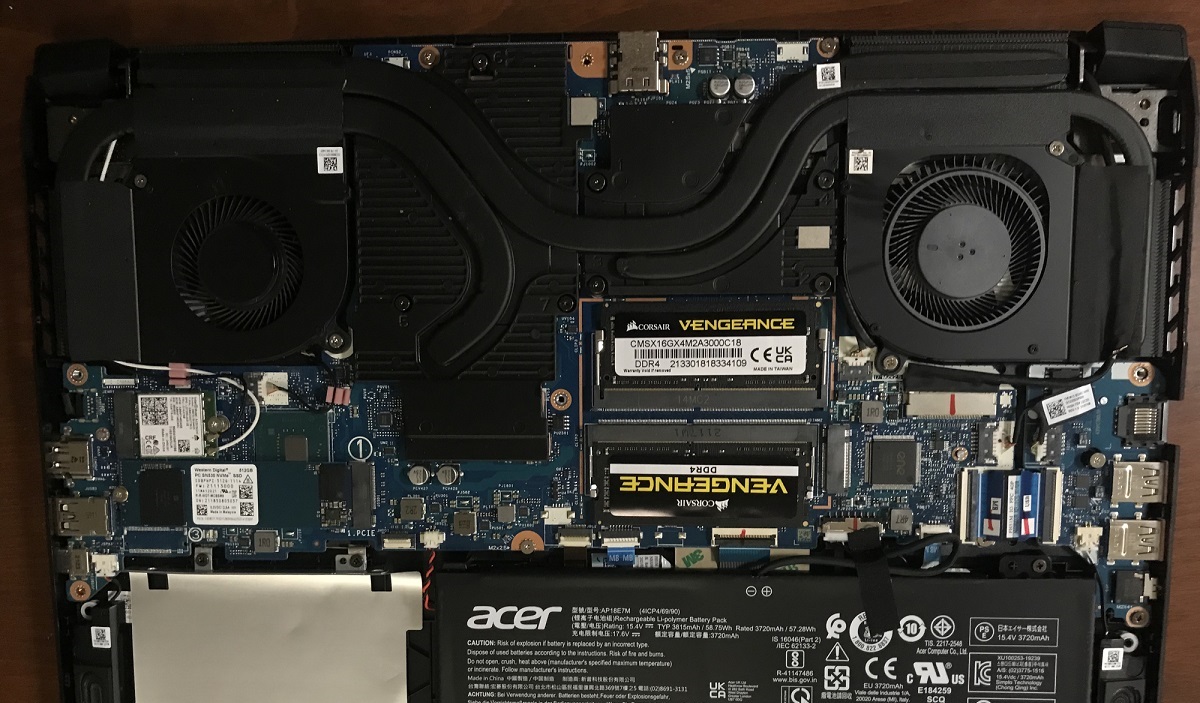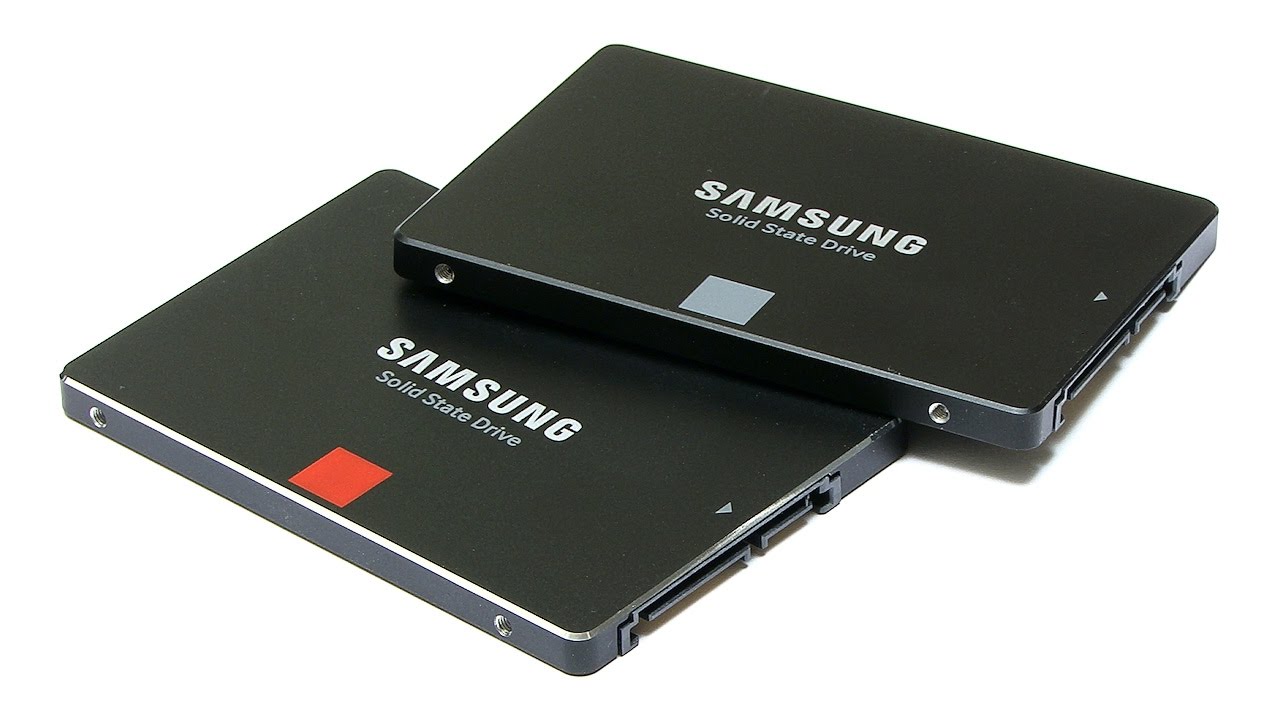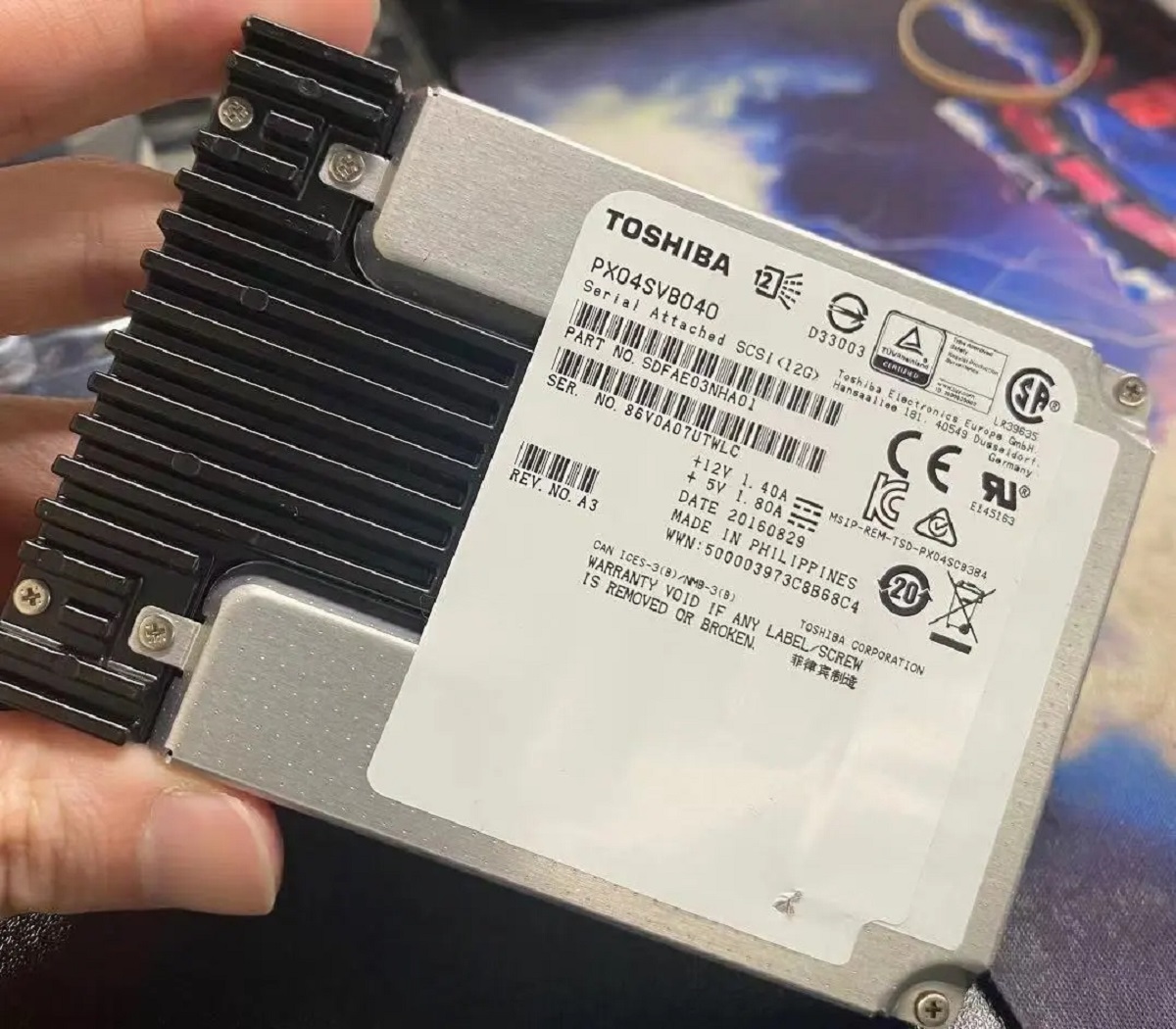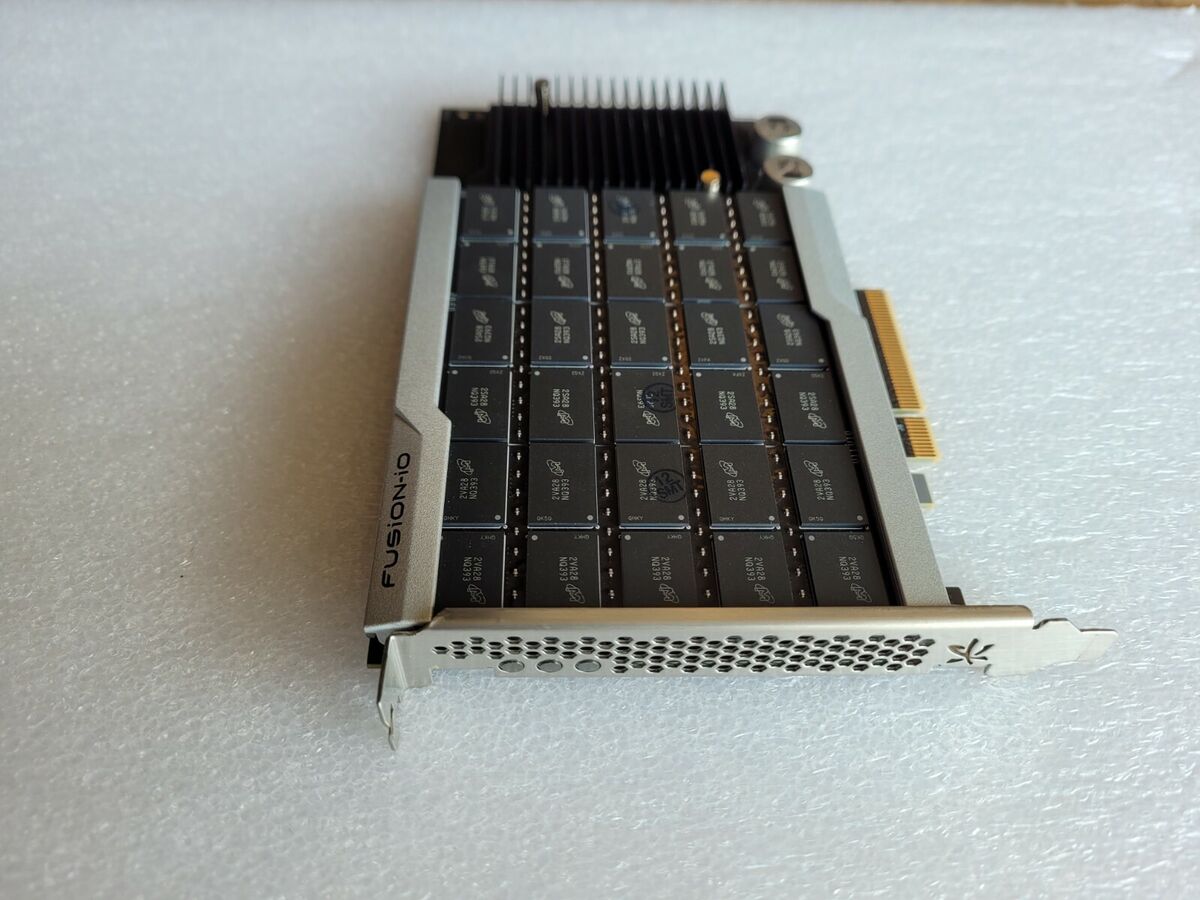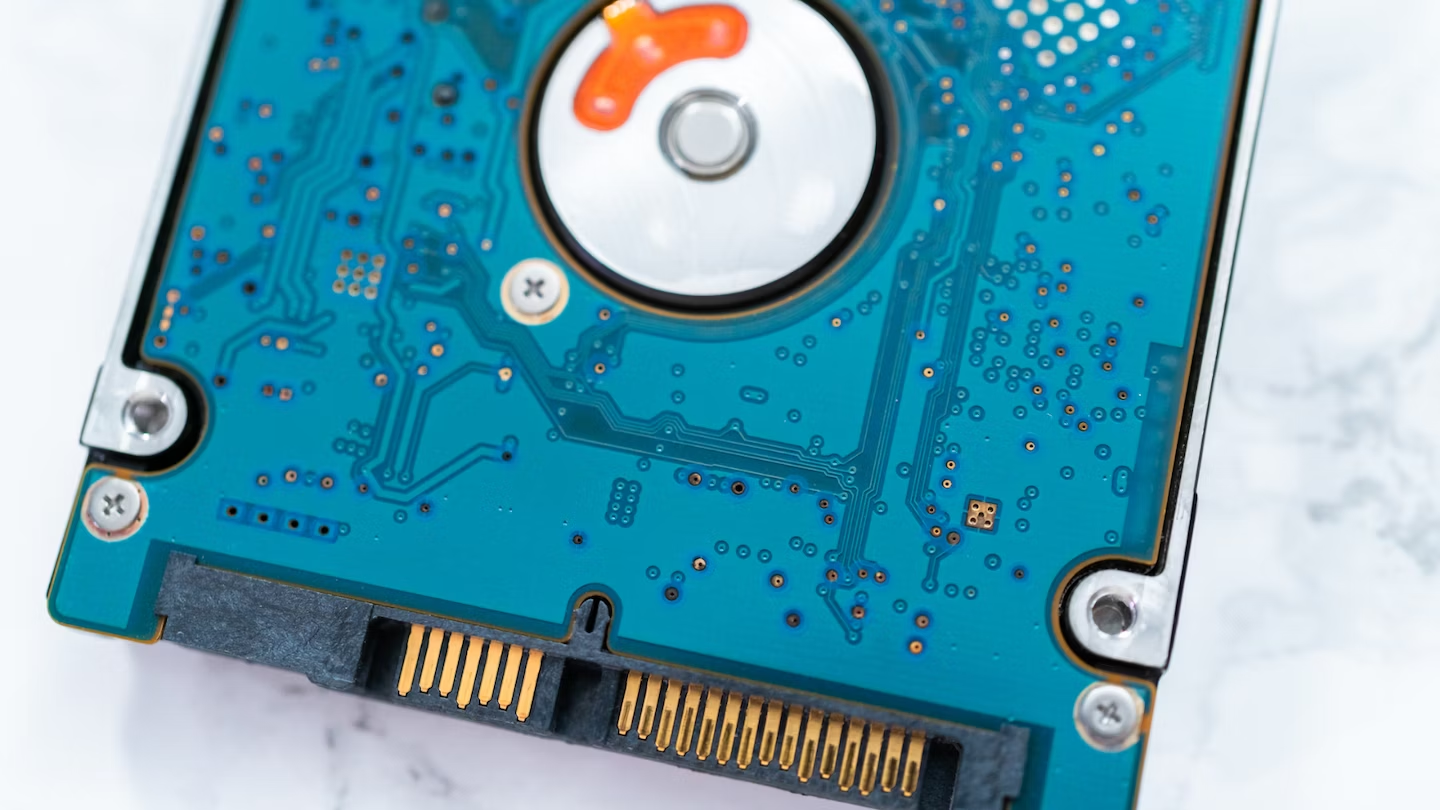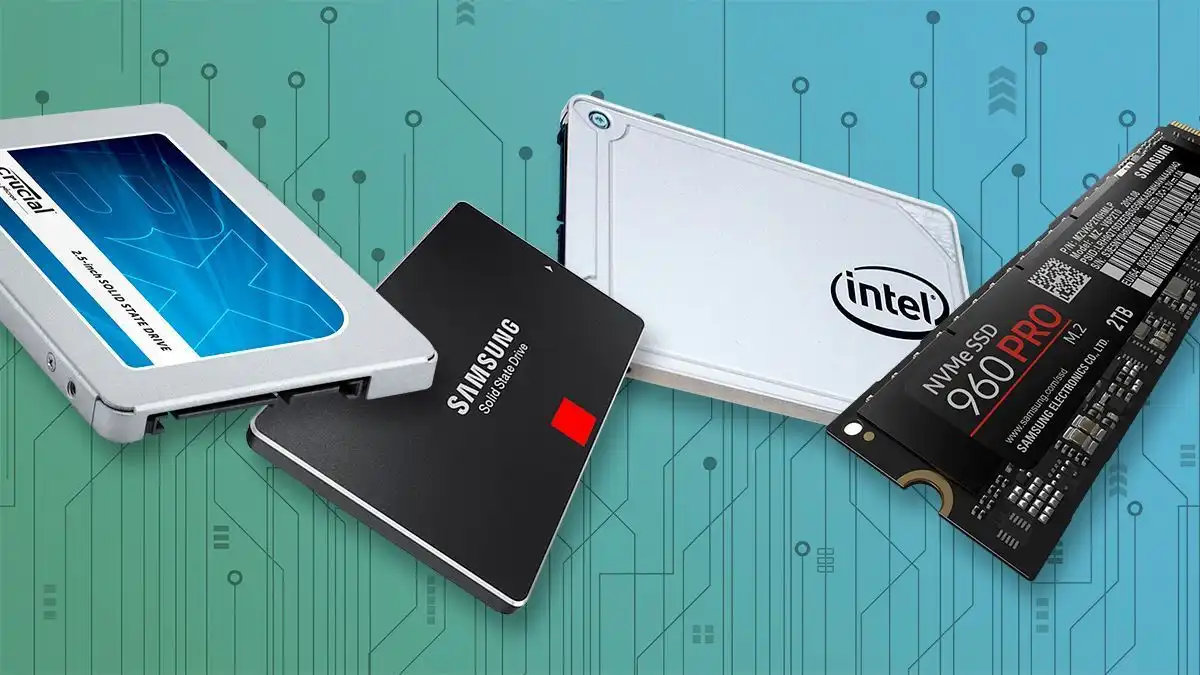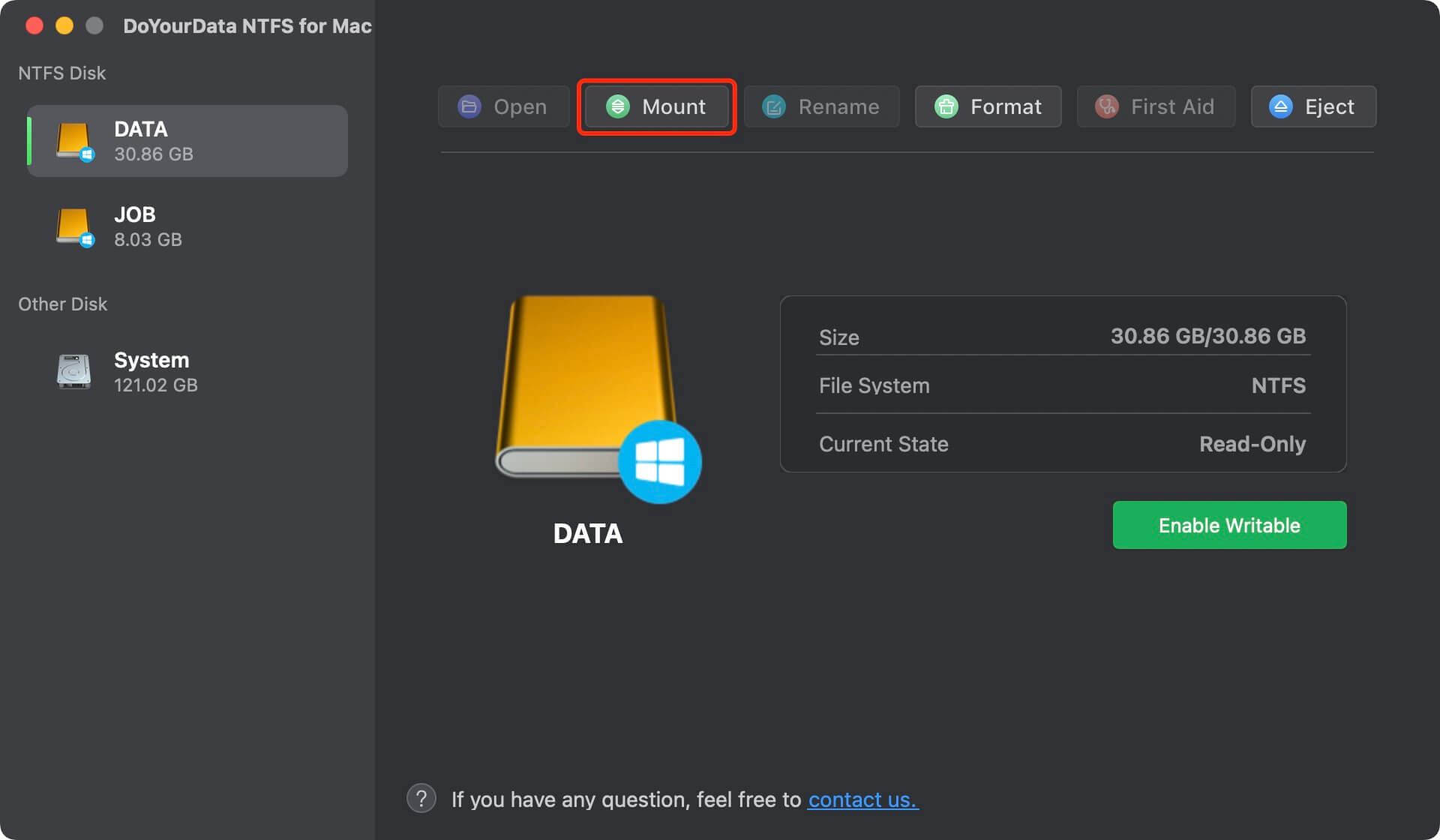Introduction
A Solid State Drive (SSD) is a popular storage device known for its speed, durability, and reliability. Compared to traditional hard drives, SSDs have no moving parts, resulting in faster data access and improved overall performance. While SSDs are designed to be low-maintenance, it’s important to understand that regular maintenance can help optimize their performance and prolong their lifespan.
In this article, we’ll explore the importance of maintaining a solid state drive and discuss some best practices to keep it in optimal condition. By following these tips, you’ll be able to ensure that your SSD runs smoothly and continues to deliver the performance you expect.
It’s worth mentioning that the maintenance steps outlined here apply to both internal and external SSDs. Whether you’re using an SSD as your computer’s primary storage or as an additional drive, proper maintenance is key to maximizing its efficiency and longevity.
So, let’s dive into the world of SSD maintenance and discover the steps you can take to keep your solid state drive running at its best. With a little effort and attention to detail, you can prolong the lifespan of your SSD and optimize its performance for years to come.
Why is Maintenance Important for a Solid State Drive?
Maintaining your solid state drive (SSD) is crucial for preserving its performance and ensuring its longevity. While SSDs are known for their durability, they still require regular maintenance to mitigate various factors that can affect their efficiency and lifespan. Here are some key reasons why proper maintenance is essential:
Preventing Data Corruption: Regular maintenance helps guard against data corruption on your SSD. Over time, errors can occur, affecting the integrity of stored data. This can lead to data loss or system instability. By performing routine maintenance tasks, such as error-checking scans, you can proactively identify and repair any potential issues before they escalate.
Optimizing Performance: SSDs rely on various algorithms and optimizations to deliver fast and consistent performance. However, through regular usage, these optimizations can degrade or become less efficient. Maintenance tasks, such as enabling TRIM and running SSD-specific optimization utilities, help maintain the drive’s performance levels, ensuring speedy data access and reducing latency.
Managing Drive Capacity: As you store files and applications on your SSD, it can quickly fill up, potentially impacting performance. SSDs need free space to operate efficiently, so it’s important to manage drive capacity by regularly removing unnecessary files, running disk cleanup tools, and avoiding storing large files that aren’t frequently accessed.
Increasing Lifespan: While SSDs are generally more durable than traditional hard drives, they still have a limited lifespan defined by the number of read and write cycles they can endure. By implementing maintenance measures like minimizing unnecessary read and write operations and keeping the drive at a reasonable temperature, you can help extend the lifespan of your SSD, maximizing its value and longevity.
Ensuring Compatibility: Regularly updating the firmware of your SSD ensures compatibility with newer operating systems and applications, improving overall system compatibility and minimizing potential issues. Firmware updates often contain bug fixes, performance enhancements, and compatibility improvements, making them essential for maintaining optimal SSD performance.
By ensuring consistent maintenance of your SSD, you can enjoy faster data access, improved performance, and increased reliability. The next sections will delve into specific maintenance practices that will help you optimize your solid state drive’s performance and extend its lifespan.
Update Firmware Regularly
One crucial aspect of maintaining a solid state drive (SSD) is keeping its firmware up to date. Firmware acts as the operating system for the SSD, controlling its functionality and performance. Regular firmware updates provide bug fixes, stability improvements, and feature enhancements, ensuring optimal compatibility and performance with your system.
Manufacturers often release firmware updates to address known issues, such as compatibility problems with certain hardware configurations or performance inconsistencies. By updating your SSD’s firmware, you can benefit from these improvements and ensure that your drive operates at its full potential.
To update the firmware of your SSD, follow these steps:
- Check the manufacturer’s website: Visit the website of your SSD’s manufacturer and navigate to the support or downloads section. Look for firmware updates specifically tailored for your SSD model.
- Read the release notes: Before proceeding with the firmware update, carefully read the release notes to understand the changes and improvements that the update brings. This will help you decide if it’s necessary to update your SSD’s firmware.
- Backup your data: As a precautionary measure, it’s always recommended to back up your important data before performing any firmware update. Though rare, firmware updates can sometimes cause unexpected issues that may result in data loss.
- Download and install the update: Download the firmware update package provided by the manufacturer and follow the installation instructions provided. Make sure to follow the steps precisely to avoid any potential complications.
- Restart your system: After successfully updating the firmware, restart your computer to apply the changes and ensure that the new firmware version is fully implemented.
It’s important to note that firmware updates may vary between different SSD manufacturers and models. Some SSDs have built-in firmware update utilities that allow for easy installation, while others may require manual installation using a separate tool provided by the manufacturer.
Regularly checking for firmware updates and keeping your SSD’s firmware up to date is essential for maintaining compatibility, stability, and performance. By doing so, you can ensure that your SSD remains optimized and operates smoothly with the latest software and hardware configurations.
Enable TRIM
One vital maintenance practice for solid state drives (SSDs) is enabling TRIM, a feature that helps optimize performance and prolong the lifespan of the drive. TRIM is a command that allows the operating system to inform the SSD which blocks of data are no longer in use, enabling the drive to proactively erase and free up space for new data. Enabling TRIM ensures that the SSD can maintain its performance and efficiency over time.
Here’s how to enable TRIM:
- Check if TRIM is already enabled: Before proceeding, it’s important to ensure that TRIM is not already enabled on your SSD. To check, open the command prompt in Windows and enter the following command:
fsutil behavior query DisableDeleteNotify. If it returns “0”, TRIM is already enabled and there’s no further action required. If it returns “1”, TRIM is not enabled, and you can proceed to the next step. - Open the Elevated Command Prompt: To enable TRIM, you need to open the Elevated Command Prompt. Right-click on the Start button, select “Command Prompt (Admin)” or “Windows PowerShell (Admin)” to open the elevated command prompt.
- Enable TRIM: In the Elevated Command Prompt window, type the following command and press enter:
fsutil behavior set DisableDeleteNotify 0. This command will enable TRIM on your SSD. - Check TRIM status: To verify that TRIM is now enabled, run the following command in the Command Prompt or Windows PowerShell:
fsutil behavior query DisableDeleteNotify. It should now return “0”, indicating that TRIM is enabled on your SSD.
Enabling TRIM is crucial for maintaining the performance and longevity of your SSD. Without TRIM, deleted files and unused data can accumulate on the drive, leading to performance degradation over time. By enabling TRIM, you allow the drive to efficiently manage its storage space, preventing issues such as read and write speed degradation and maintaining consistent performance.
It’s worth mentioning that most modern operating systems, such as Windows 10 and macOS, automatically enable TRIM by default when they detect an SSD. However, it’s still a good idea to verify and enable TRIM manually to ensure that it is correctly enabled on your system.
By enabling TRIM, you can optimize the performance and lifespan of your SSD, ensuring that it operates at peak efficiency and remains a reliable storage solution for your computer.
Avoid Filling the Drive to Its Full Capacity
When it comes to maintaining a solid state drive (SSD), one important practice is to avoid filling the drive to its full capacity. While SSDs are known for their fast performance and reliability, keeping them at or near maximum capacity can have detrimental effects on their overall functionality.
Here are some reasons why you should avoid filling your SSD to its full capacity:
Performance Impact: SSD performance can be negatively affected when the drive is almost full. As the available free space diminishes, the drive’s ability to efficiently manage data can be compromised, resulting in slower read and write speeds. Additionally, frequent small write operations might require the SSD to perform time-consuming garbage collection tasks, further impacting performance.
Reduced Lifespan: SSDs have a limited number of write cycles before they begin to wear out. When the drive is filled to capacity, it undergoes more frequent write operations, accelerating the wear on the memory cells. This can significantly reduce the lifespan of the SSD, leading to potential data loss and the need for premature replacement.
Inefficient Trim Functionality: The Trim command, which helps maintain performance by informing the SSD which data blocks are no longer in use, can become less efficient when the drive is nearly full. The SSD may struggle to find sufficient free space to execute Trim, resulting in reduced performance and fragmented data storage.
It is recommended to keep at least 10-20% of the SSD free to maintain optimal performance. This free space allows for efficient garbage collection, Trim operations, and wear leveling algorithms to function properly.
To prevent your SSD from reaching full capacity, consider the following practices:
- Regularly Clean Up Unnecessary Files: Delete unnecessary files, temporary files, and redundant data from your SSD to free up space.
- Store Larger Files on Secondary Drives: If possible, store larger files such as videos, images, and archives on secondary storage devices like external hard drives or network-attached storage (NAS) systems.
- Use Cloud Storage or Online Services: Sync important files and documents to cloud storage or online services to offload data from your SSD.
- Move Installed Applications to Another Drive: Some applications, especially gaming and multimedia software, can take up a significant amount of storage space. Consider moving them to another drive to save SSD space.
By implementing these practices and avoiding filling your SSD to capacity, you can ensure a longer lifespan and maintain optimal performance for your solid state drive.
Regularly Run Error-Checking Scans
Maintaining the health and performance of a solid state drive (SSD) involves regularly running error-checking scans. These scans help identify and correct any issues or errors that may have occurred on the drive, ensuring its reliability and optimal functionality.
Here are some key reasons why running regular error-checking scans is important:
Detecting and Repairing File System Errors: Over time, file system errors can occur on an SSD. These errors may result from improper shutdowns, power failures, or other unforeseen circumstances. By running error-checking scans, such as the built-in chkdsk utility in Windows or the fsck command in macOS and Linux, you can identify and repair these errors. This helps to prevent data corruption and maintain the integrity of your files.
Identifying Bad Sectors: Bad sectors are areas on the SSD that have become unreadable or unreliable. While SSDs are less prone to bad sectors compared to traditional hard drives, they can still occur. Regular error-checking scans can help identify and mark these bad sectors, allowing the SSD to redirect data to healthy sectors, thereby preserving data integrity and preventing potential data loss.
Optimizing Performance: Error-checking scans not only help detect and repair errors but can also improve overall performance. By fixing file system errors and remapping bad sectors, the SSD can maintain efficient data access and reduce the potential for slowdowns or system instability.
The process of running an error-checking scan will vary depending on your operating system:
- Windows: To run a disk error-checking scan in Windows, open File Explorer, right-click on the SSD, select “Properties,” navigate to the “Tools” tab, and click on the “Check” button under the “Error checking” section. Follow the on-screen instructions to initiate the scan and allow it to complete.
- macOS: In macOS, open the Disk Utility application, select the SSD from the sidebar, click on the “First Aid” button, and then click on “Run” to perform a scan and repair any errors.
- Linux: Linux users can utilize the fsck command in the terminal to perform a file system check and repair on their SSD. The specific command and options may vary depending on the Linux distribution you are using. Please refer to the documentation or community resources for the appropriate command syntax.
It’s recommended to run error-checking scans on your SSD periodically, such as once every few months or after experiencing any unusual system behavior. By doing so, you can ensure the overall health, reliability, and performance of your solid state drive.
Minimize Unnecessary Read and Write Operations
To maintain the performance and extend the lifespan of your solid state drive (SSD), it’s essential to minimize unnecessary read and write operations. While SSDs are highly durable and efficient, excessive read and write operations can contribute to wear and tear, potentially reducing the lifespan of the drive and impacting its overall performance.
Here are some strategies to help minimize unnecessary read and write operations on your SSD:
1. Avoid Excessive Temporary Files: Temporary files are often created by applications or the operating system and can accumulate over time. These files are typically not needed long-term and can take up valuable SSD space. Regularly clearing temporary files using built-in tools or third-party software can help reduce unnecessary read and write operations on the drive.
2. Be Mindful of Browser Cache: Web browsers store temporary files, including cached web pages and images, to improve browsing speed. While browser caching can enhance user experience, it can also consume significant SSD space. Limiting the size of the browser cache or periodically clearing it can help reduce unnecessary read and write operations on the SSD.
3. Manage Software Updates: Some software, especially larger applications or games, can generate significant read and write operations during updates. It’s important to manage software updates efficiently by avoiding frequent or unnecessary updates. Consider scheduling updates during non-peak usage times or manually controlling when updates are applied to minimize SSD activity.
4. Disable Unnecessary Background Services and Processes: Background services and processes running on your system can contribute to unnecessary read and write operations on the SSD. Review the list of running services and processes and disable any that are not essential or have a high disk activity. This can help reduce the overall load on the SSD.
5. Optimize Virtual Memory Usage: Virtual memory, also known as the page file, is used by the operating system to supplement physical RAM. The constant swapping of data between RAM and the page file can generate additional read and write operations on the SSD. Optimizing virtual memory settings, such as setting a fixed size or moving the page file to a secondary storage device, can help reduce unnecessary SSD activity.
6. Minimize Unnecessary File Indexing: File indexing services, such as Windows Search, actively scan and index files on your SSD to improve file searchability. However, this process can generate ongoing read and write operations. If you don’t require extensive file searching, disabling or limiting file indexing can reduce unnecessary SSD activity.
By implementing these practices, you can help minimize unnecessary read and write operations on your solid state drive. This, in turn, supports the longevity of the drive and maintains its optimal performance over time.
Avoid Excessive Heat and Temperature Fluctuations
Maintaining proper temperature conditions for your solid state drive (SSD) is crucial for its optimal performance and longevity. While SSDs are generally more resilient to heat than traditional hard drives, excessive heat and temperature fluctuations can still impact their overall reliability and lifespan.
Here’s why it’s important to avoid excessive heat and temperature fluctuations for your SSD:
Preventing Performance Degradation: SSDs contain electronic components that generate heat during operation. When the temperature exceeds the recommended operating range, the SSD’s performance can deteriorate due to thermal throttling. This can result in slower read and write speeds and potentially lead to system instability.
Prolonging Lifespan: High temperatures can accelerate wear on the SSD’s memory cells, shortening its lifespan. Excessive heat can cause the NAND flash memory cells to degrade faster, leading to potential data loss and the need for premature replacement. By keeping the SSD within the manufacturer’s specified temperature range, you can extend its lifespan and maximize its value.
Avoiding Data Corruption: Rapid temperature fluctuations can create stress on the components of the SSD, potentially leading to data corruption. Sudden changes in temperature can cause expansion and contraction, affecting the stability of the components. It is important to provide a stable temperature environment to mitigate the risk of data corruption or drive failure.
To ensure your SSD remains within the recommended temperature range and to minimize temperature-related issues, follow these best practices:
- Proper Ventilation and Airflow: Ensure that your computer or laptop has adequate ventilation and airflow to dissipate heat effectively. Dust accumulation can hinder proper airflow, so regular cleaning of cooling fans and vents is essential.
- Avoid Direct Sunlight: Keeping your computer or laptop away from direct sunlight can help prevent a rise in internal temperatures. Sunlight can rapidly increase the ambient temperature, leading to potential heat-related issues.
- Avoid Excessive Overclocking and Overheating: Overclocking a processor can generate excessive heat, impacting the overall system temperature. If you engage in overclocking, ensure proper cooling measures are in place to prevent overheating the SSD and other components.
- Use Cooling Solutions: If your SSD is exposed to high temperatures due to environmental factors or intense workloads, consider using additional cooling solutions such as high-quality fans, heat sinks, or liquid cooling systems to regulate the temperature.
- Monitor Temperature and Use Diagnostic Tools: Regularly monitor the temperature of your SSD using manufacturer-provided diagnostic tools or third-party software. These tools can help you identify any temperature-related issues and allow you to take appropriate measures to mitigate them.
By maintaining an appropriate temperature range for your solid state drive, you can ensure its longevity, prevent performance degradation, and safeguard your data from potential corruption or loss.
Keep Your Operating System and Drivers Up to Date
Regularly updating your operating system and drivers is an important practice in maintaining the optimal performance and compatibility of your solid state drive (SSD). Staying up to date ensures that your SSD can take full advantage of the latest improvements, fixes, and optimizations offered by the operating system and driver updates.
Here are several reasons why keeping your operating system and drivers up to date is crucial:
Improved Performance: Operating system and driver updates often include performance enhancements and optimizations. These updates can optimize the utilization of your SSD, improving read and write speeds, reducing latency, and enhancing overall system performance. By staying current with updates, you ensure that your SSD operates with the most updated and efficient software components.
Increased Stability: Outdated operating systems and drivers can contain bugs or compatibility issues that may affect the performance and stability of your SSD. By installing the latest updates, you gain access to bug fixes and compatibility improvements, minimizing the risk of system crashes, errors, and data corruption.
Enhanced Security: Operating system updates often include security patches that address vulnerabilities and protect your system from malicious threats. These updates play a crucial role in safeguarding your data and preventing unauthorized access or data breaches that could potentially impact your SSD’s integrity.
To ensure that your operating system and drivers are up to date, follow these practices:
- Enable Automatic Updates: Configure your operating system to automatically check for updates and install them. This ensures that you receive the latest updates as soon as they become available, without manual intervention.
- Regularly Check for Updates: If automatic updates are not enabled, periodically check for updates manually. Most operating systems provide options to check for updates within the system settings or control panel.
- Update SSD-Specific Software: Some SSD manufacturers provide their own software utilities for optimizing performance or monitoring the health of the drive. Regularly check for updates for these SSD-specific software tools and install them to ensure compatibility and access to the latest features.
- Visit Manufacturer Websites: Check the websites of your SSD manufacturer and hardware component manufacturers to find the latest driver updates specifically designed for your SSD. Download and install the recommended drivers to guarantee optimal compatibility and performance.
By keeping your operating system and drivers up to date, you can take advantage of the latest improvements, optimizations, and security enhancements, allowing your SSD to perform at its best and ensuring compatibility with the latest technologies and software.
Be Cautious When Shutting Down or Restarting Your Computer
Proper shutdown and restart procedures are essential to maintain the health and integrity of your solid state drive (SSD). While SSDs are more resilient than traditional hard drives, improper shutdown or restart practices can still lead to data corruption, performance issues, and potential damage to your SSD. It’s important to be cautious and follow these guidelines:
Graceful Shutdown: Always shut down your computer using the proper shutdown procedure provided by your operating system. This allows the operating system to complete any pending write operations and ensure that data is safely written to your SSD. Abruptly cutting power to your computer, such as by holding down the power button, can interrupt the writing process and risk data loss or corruption on your SSD.
Restart Instead of Power Cycle: When restarting your computer, use the restart option provided by your operating system instead of performing a power cycle. Restarting allows the system to go through the proper shutdown sequence, clear temporary data, and initialize hardware components correctly. Power cycling, which involves turning off the power completely and then turning it back on, can put stress on the SSD and increase the risk of wear and tear.
Avoid Frequent Restarting: While it’s important to restart your computer periodically to apply updates and clear temporary data, excessive restarting can contribute to more wear and tear on your SSD. Restarting once every few days or when necessary for system performance or stability is generally sufficient. Avoid unnecessary restarts to minimize the strain on your SSD.
Check for Disk Activity: Before shutting down or restarting your computer, ensure that there is no disk activity indicator light or background processes involving your SSD. Some applications, such as anti-virus scans or file transfers, may run in the background and require more time to complete. Wait for these processes to finish or manually pause or cancel them to prevent interrupting the write process and potential data loss.
Use Sleep or Hibernation Modes: Utilizing sleep or hibernation modes can provide a fast startup experience while minimizing wear on your SSD. These modes allow your computer to enter a low-power state without fully shutting down, allowing for quicker resumption of work and reducing unnecessary write operations.
By following these precautions, you can ensure the long-term health and reliability of your solid state drive. Proper shutdown and restart practices minimize the risk of data corruption, maximize the lifespan of your SSD, and keep it functioning optimally for a smooth computing experience.
Conclusion
Maintaining a solid state drive (SSD) is essential to ensure optimal performance, reliability, and longevity. By implementing the various maintenance practices discussed in this article, you can keep your SSD running smoothly and maximize its lifespan.
We began by emphasizing the importance of regular maintenance for SSDs, despite their reputation for being low-maintenance devices. Performing routine maintenance tasks helps prevent data corruption, optimize performance, manage drive capacity, and extend the lifespan of your SSD.
We discussed specific maintenance practices, including updating the firmware of your SSD to ensure compatibility and access to performance and stability improvements. Enabling TRIM allows your SSD to proactively free up space and optimize its performance. Avoiding filling the drive to its full capacity helps maintain efficient operation and prolong the lifespan of your SSD.
Regularly running error-checking scans helps detect and correct file system errors and bad sectors, ensuring the integrity of your data and preventing potential issues. Minimizing unnecessary read and write operations reduces wear on the SSD and helps sustain its performance and longevity. Avoiding excessive heat and temperature fluctuations protects the SSD from performance degradation and potential damage.
Keeping your operating system and drivers up to date is crucial for optimal SSD performance and compatibility with the latest technologies and software. Lastly, practicing caution when shutting down or restarting your computer helps prevent data corruption and ensures the proper functioning of your SSD.
By incorporating these maintenance practices into your SSD care routine, you can enjoy improved performance, extended lifespan, and reliable storage for your data. Remember to regularly check for updates, perform error-checking scans, monitor temperature, and follow proper shutdown and restart procedures to keep your SSD operating at its best.
Investing time and effort in maintaining your SSD will pay off in terms of better performance, increased reliability, and prolonged lifespan, ultimately providing you with a smooth and seamless computing experience for years to come.







